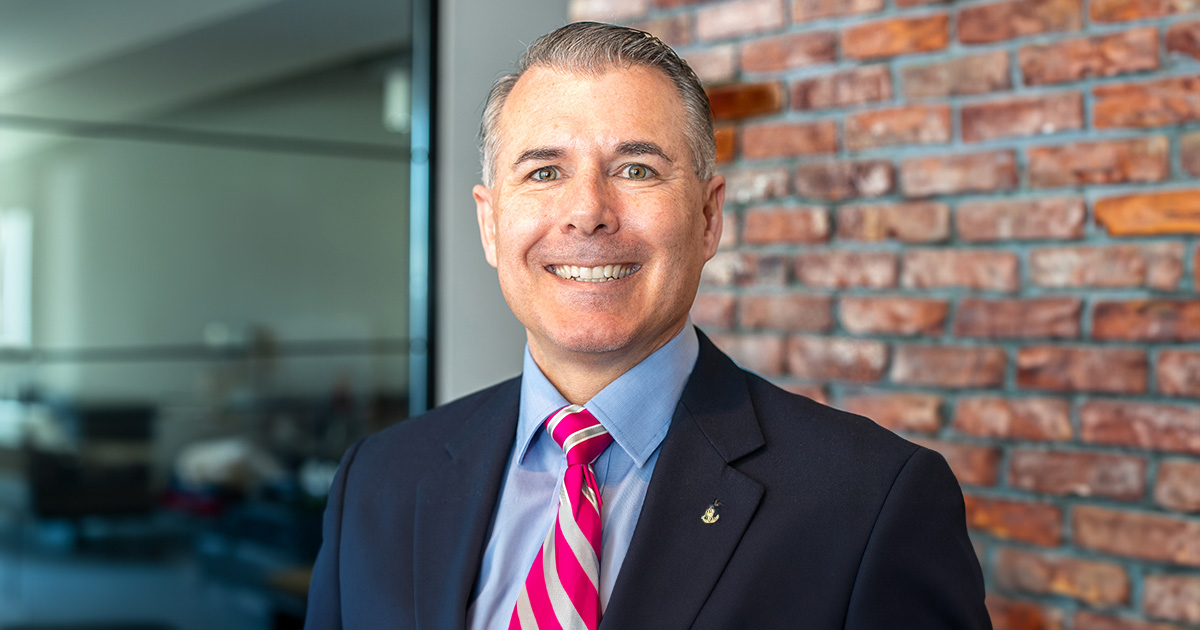IN THE PAST, I HAVE TALKED A LOT ABOUT WHAT LEADS TO THE DISCOVERY OF CONTAMINATION, AND WHAT TO DO IF, OR WHEN, YOU LEARN THAT CONTAMINATION HAS BEEN DISCOVERED AT YOUR SITE OR A PROPERTY. BUT WHAT I HAVEN’T DONE BEFORE, IS PRESENT A SYSTEMATIC PROCESS OF WHAT STEPS SHOULD BE UNDERTAKEN WHEN PERC CONTAMINATION IS FOUND. GETTING IT RIGHT IS IMPORTANT BECAUSE YOUR LEGAL SECURITY, YOUR MONEY, AND YOUR REPUTATION ARE ON THE LINE.

BY: JEFF CARNAHAN
To start, I’ll walk through the three important areas to become familiar with when addressing environmental contamination. Also, if you’re interested in this topic area, check out our webinar with Cleaner and Launderer on “how to respond when you find perc contamination”.
UNDERSTANDING THE REGULATORY DEMANDS
If an environmental contamination problem has come to light and you’ve been notified, there are regulations, rules, and laws in effect that require you to respond. Congress passes the laws that govern the United States, but Congress has also authorized EPA and other federal agencies to help put those laws into effect by creating and enforcing regulations. The EPA, in turn, has given each state the authority to implement and enforce their regulations within their area of jurisdiction, so long as the state regulations are at least as stringent as the federal regulations. A similar process exists in Canada between the federal and provincial environmental regulating agencies.
When an environmental release of hazardous substances has occurred onto or beneath the ground surface, these regulations require that the parties that may have caused or contributed to that contamination are responsible for investigating the nature and extent of the release. There are many nuances involved in determining who may become considered a potential responsible party, and who may ultimately be required to clean up the contamination, as I’ve discussed in recent articles. This question of rightful responsibility, if potentially contested, really belongs in the realm of legal liabilities, and an attorney should be consulted. The process for complying with the regulatory agencies is a bit less complex, although there are many nuances and an experienced environmental consultant will be needed to interface with the agency on your behalf.
So, when you first learn that there has been a release of hazardous materials, such as chlorinated or petroleum dry cleaning solvents, the first thing you’ll need to do is quickly find a consultant or an environmental attorney to make sure that you follow the required process for your state. Commonly, there is a reporting process that must be followed, and there are well-defined timelines that must be met. Once the contamination has been reported to the agency, your case will receive a number, which will be used throughout your regulatory process. You may be given an option to enter a voluntary cleanup program, or you may be required to remain in an enforcement program. Those who take the option to perform investigation and cleanup in a voluntary program usually are allowed more freedom in process and timing and may be eligible for a greater degree of indemnification at the close of the process after cleanup is complete. Enforcement programs may take longer since the agency remains involved in every step, and approvals may take a while. There are other regulatory vehicles that may come into play, such as agreed orders or enforcement orders, when higher levels of assurance are needed by you as the responsible party or the agency.
Each agency has its own personality and may create its own frustrations for you. Bottom line, however, is that if an environmental release has been identified and you want to put it behind you, involvement of the regulatory agency will be necessary. The mission of environmental agencies is to protect human health and the environment. If you keep that in mind and let that be the basis for dealings with the agency, you may be able to have a better understanding of their actions. You may also need to remind certain people within the agency of the scope and limits of their own mission at times to keep them from overreaching their boundaries. That’s specifically what most environmental consultants are good at, so look to them to lead these conversations.
UNDERSTANDING THE LEGAL LIABILITIES
There are many legal issues that may arise soon after you discover environmental contamination, for which you may be responsible. The very first of which is, are you potentially responsible. Since this question is a matter of environmental laws, an environmental attorney should help you answer that. If you are a single owner who has operated at a site where nobody else has, then it may not really be an applicable question. However, if there have been multiple operators and landowners at the contaminated site and you are just one of them, there are some legal matters to address. That’s just the tip of the iceberg when it comes to involving an environmental attorney on your behalf.
The environmental rules and regulations are very closely linked with the law. Any time a matter of law is involved, so should an attorney. Your environmental consultant cannot and should not give advice related to the law. They can help you adhere to regulations, but not laws. As such, relying on your consultant to assist with regulations at a lower price, and have your attorney help with true legal matters at a typically higher price is the normal combination. Conversely, attorneys aren’t in the business of making scientific recommendations regarding the actual investigation and cleanup of the contamination, so that’s another reason why both environmental consultants and attorneys are needed.
It’s common for your environmental attorney to also assist you in understanding other aspects of legal liability outside of regulatory issues that you may have because of the contamination. For example, if the contamination at your site has crossed the property line, there may be trespass issues, and potentially human exposure liabilities to assess and attend to. By allowing your attorney to guide you during the investigation and cleanup process, you’ll have someone watching your back and making sure you don’t expose yourself to liabilities accidentally. You will want a specialized environmental attorney who has much experience with these types of matters. A general business practitioner is likely not experienced enough with these matters to give you sound advice.
UNDERSTANDING THE FINANCIAL BURDENS
The third component of getting started with handling your environmental contamination problem has to do with money. The investigation and cleanup process ranges from expensive to very expensive, so having a hard look at a financial strategy is of paramount importance. The legal advice and work costs money, the investigation and cleanup process itself costs money, the agency is likely to charge you fees for their oversight, and heaven forbid, there could even be penalties involved if you get behind the eight ball. The really bad news here is that lack of funding doesn’t constitute an avenue for forgiveness of a responsible party’s ownership of the liability to investigate and clean up the contamination. Given a demonstration of financial hardship to the agency, you could qualify for various forms of aid, however. Some agencies work with state-run financial entities that may be able to provide you with a low-interest loan, but that may not be a great alternative. The first action is to evaluate all your business assets to make sure that you aren’t leaving any stones unturned. Of course, look at your old commercial general liability (CGL) policies. If you know that you bought these policies but can’t find them, hire an insurance archeologist to help recreate your old insurance portfolio. If you are in a state with favorable case law, you could be covered for the investigation costs, cleanup costs, and your environmental attorney costs.
Work with your environmental consultant to determine the potential financial burden that you may be facing. They will be very cautious about giving you an estimate because until the investigation phase of the work has been completed it will be difficult to quantify a dollar amount. Therefore it’s important to have various options for funding readily available. Contamination can be very tricky, especially chlorinated solvent releases such as tetrachloroethylene (Perc), which tend to hide the true magnitude until a full evaluation has been conducted. The investigation process alone can cost a few hundred thousand dollars. Over my decades of environmental work, it’s common to see an average cost of over one million dollars for a drycleaner site where a release of Perc has occurred. Granted, I’ve seen regulatory closures attained for less than five hundred thousand dollars, but I’ve also seen drycleaner cleanups cost into the tens of millions of dollars. It just depends on how long ago the release happened, and how bad it was.
Hiring a consultant who has performed numerous drycleaner site cleanups is critical since they can help you understand the potential cost more than others. A good one should also be familiar with other potential funding resources that may be available to you. Everyone understands that small business, and even larger ones, may have a hard time with the financial burden of environmental investigation and cleanups. Don’t panic until you’ve explored all avenues.
These three areas – regulatory, legal and financial – are all important when you’re faced with environmental contamination. Whether you expected it or not, you could be on the hook for the cleanup. By following the advice given in this article, you’ll be well on your way to addressing environmental contamination responsibility with a sense of calm for your legal security, your financial plans and your reputation. Both your pocketbook and the future value of your property will thank you and you can rest assured that you took every step you could to get the best outcome possible.
Contact us today to address your environmental contamination.
As seen in Cleaner and Launderer
 Jeff Carnahan, President
Jeff Carnahan, President
Jeff Carnahan, LPG, has 20+ years of environmental consulting and remediation experience. His technical expertise focuses on the investigation and interpretation of subsurface releases of hazardous substances for the purpose of evaluating and controlling the risk and cost implications. He has been a partner of the drycleaning industry for the past decade, and is a frequent contributor to the national drycleaning publication Cleaner & Launderer. He is an industry leader in understanding that environmental risk includes not only cleanup costs, but also known and unknown third-party liability.



